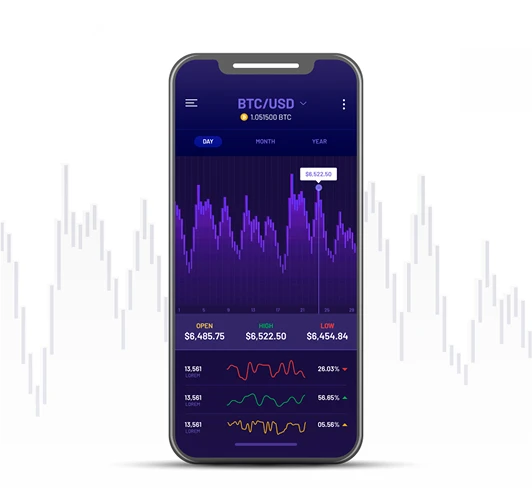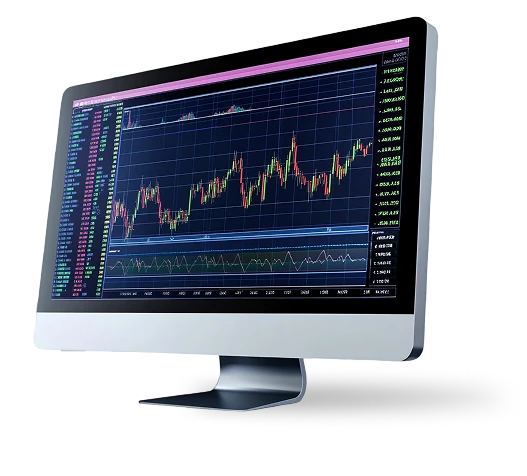Kikit AI is the easiest way to do analysis with the help of real-time automation, while it also gives people assistance in understanding volatile markets through structured feedback that fits equally well with beginners and seasoned traders.
Kikit AI processes massive data sets instantly, searching for pricing irregularities or patterns as they arise. This clarity eliminates hesitation and contributes to better timing.
The strategy of Kikit AI allows the use of expert techniques from the history. Kikit AI filters live data into clear signals, helping users trade with less uncertainty and more structure.

Kikit AI is constantly on the move in watching the latest developments in the markets, giving the discovery of new patterns. By updating insights in real time and offering layered protection, traders can confidently take steps even when events threaten to throw the markets into uncertainty.

Kikit AI has been designed as an AI-powered tool that anticipates fast trader reaction and adaptation to current market changes. Whereas movement and the atmosphere might often pass very quickly, this ensures that humans can respond quickly with little time for confusion.

Kikit AI now processes massive flows of market data and instantly adjusts according to any changes. This combination of trends from both the past and present insinuates momentum shifts. This provides clarity for users to time their trades.
Kikit AI has a copy-trading feature, allowing users to copy techniques of experienced traders. Presented within an AI-supported contextual framework, the system provides guidance without taking away control, ideally suited for those who want a little flexibility.

User data on Kikit AI is harnessed with security-based systems, backed by clear disclosure. Since trades themselves are not executed on the platform, Exhibit disables much risk and hence would be preferred by users while exploring AI-based market evaluation.
Kikit AI combines the analysis of human behaviour with live monitoring so that ผู้ศึกษาการเปลี่ยนแปลงของตลาด can understand these changes in action. It works to simplify decision-making by converting raw human activity into structured observations that tell the users where a shift to price momentum is occurring.
Kikit AI observes price formation and supplies accurate real-time alerts and feedback to end-users. These tools give users the edge on timely information that can help them switch directions and changes initiated by new trends.
Kikit AI reads complex markets for its user, AI tracking trends to identify hidden changes and hasten time to react. Kikit AI stands as a constant real-time source of insight geared toward navigating volatile asset activity.
Kikit AI has the ability to maintain pace with ever-changing market conditions by constantly adapting itself. It proffers an interpretation of market data with precision to offer users a clearer view of price behaviour and decisions.
Kikit AI infuses views of past market behaviour with current market signals to enable users to swiftly adjust their strategies. This learning adaptation significantly speeds up the recognition of changes and enhances forecasting.
Kikit AI operates around the clock, instantly reviewing any change to the market and conveying such insights into a readable format. Based on constant observation, it in fact enhances timely responses, thereby ensuring users stay aligned with current conditions.
Kikit AI ensures long-standing access to hands-on application support for both simple and advanced needs. From guided walkthroughs for new users to troubleshooting for technical errors, the solution is purposely designed to stay responsive and effective at all times. This in turn ensures end users at any point of their trading journey always feel supported and confident.
Kikit AI analyzes the live action of the markets so that users can make sense of changes as they occur. It gives clues to happenings of trend shifts and behaviour patterns, with strategy guidance tailored depending on the experience level. Hence, users face a bright prospect of market direction and how to counter them.
Heavy lifting is done with regards to presenting the highest form of insights by Kikit AI so users would not have to constantly keep track of the market for information. It is impregnated with professional strategy recommendations that users can rely on, thus retaining full control as to when to act.
With a view toward keeping user privacy as the topmost priority, Kikit AI infrastructure is built using double-encrypted systems and responsible data management. Whether a newcomer or the highly experienced one, all users receive the assistance of a highly secured system with great recommendations designed towards making safer choices within crypto.

Kikit AI supports traders by providing flexible tools to adapt to any timeline. Its AI-driven framework promotes improved assessment of changing trends while adapting strategies according to the user's preference of trading, whether it is long-term planning or adjusting to day-to-day changes.
By churning through high-velocity data, Kikit AI observes behavioural trends and points to strategic cues, thus endowing the users with up-to-date insight relevant to their interests. Transitional ease between short- and long-term trading considerations is thereby created on users' end.
Trading styles greatly vary—from price movements to long-view style investors. Short-term traders are people watching for rapid changes; long-term traders tend to watch patterns at a larger scale. Kikit AI, through its intelligent datatools, allows both groups to compare and challenge similarly on their strongest lines to fit user needs.
Liquidity is what influences asset behaviours, particularly during sudden price shifters. More liquidity sustains smoother transfers; less may bring in an element of instability. By tracking liquidity trends across time, Kikit AI provides data that really help the users in planning and strategizing through unpredictable market phases.
The AI technology in Kikit AI locates vital price levels to enable users to assess their reward against the risk. By using structured insights to chart return objectives and stop-loss zones, traders can lay plans more clearly and shift gears when markets deviate from forecasted regions.
Kikit AI is able to analyze real-time data for detecting crucial changes and drawing out much confusion. Its AI-empowered tools engage in rational and well-thought decision-making processes. Reliable alerts pinpoint when and how to act for users, cutting out the guessing game and enhancing response capacity toward the current state of market activity.

Kikit AI works to provide admission to advanced indicators that operate in real time to show the market. It offers tools and structures the process for the user to better time entries and exits and assess strength and reversal areas with MACD, Fibonacci levels, or Stochastic Oscillator.
The Fibonacci points may identify some stall points in the price. Stochastic indicators are used to detect the exhaustion level of buying or selling activities. MACD is used for analyzing the trend momentum and trend direction. These three indicators, along with one another, provide stronger thoughts on tactical price response formation.
Kikit AI, with the integration of AI, finds recurrent activity patterns that probably indicate future movement. This kind of new knowledge can help users make smarter adjustments in how to respond with their strategy through fast-changing phases within the period.
At the same time, the sentiments of traders in the market may affect the price directions even before the data. Kikit AI captures and decodes sentiment signals by using a combination of trading activity, social commentary, and momentum shifts to give inputs on the feel of the market.
From instances wherein hope is blossoming to where fear is creeping, Kikit AI compares sentiment analysis patterns whose trends again are an evaluation of current shifts into past shifts to give users confidence when the mood flips over different asset classes.
The integration of technical indicators with sentiment analysis offers increased clarity. Kikit AI weaves a tapestry of relevant signals to provide feedback to the user, allowing quick adaptation to surprise moves while still staying grounded on the overall strategic framework.

Big-picture economic shifts—like rising inflation, job growth changes, and central bank moves-often provide new directions. With Kikit AI, users get AI-enhanced insights that show how these big forces apply onto decentralised finance and digital asset value.
Some patterns emerge if we view historical data on economic policies. Kikit AI uses these past signals to show how government actions affected or altered crypto pricing, providing traders perspective on how future implementations might play out. This transparency facilitates the users in creating forward-looking strategies.
Kikit AI distills the more complex financial indicators into straightforward views, helping the user better comprehend how the macro landscape is shaping pricing. It lends support in reacting appropriately to unfolding events, and readies the user for the cascading effects of major market developments.

In volatile markets, speed and accuracy often bring success. Having AI capabilities working in real-time to track, Kikit AI finds the momentum build-up and possible pauses along the trend's flow. This gives users the ability to time their trades better with the clarity of data.
The system can also show strong activity clusters-those areas with the highest probability of movement intensification. Delivered from trustworthy data sources, Kikit AI signals provide users with enhanced insights to prepare their strategies ahead of market movers.
To guard against overconcentration that could destabilize risk, Kikit AI has capabilities to study how classes of assets perform under stress and in possible periods of recovery. Such information offers perspective to better distribute holdings so resistance can be further enhanced in various times of the market.
Small signals meaning big opportunity; Kikit AI applies advanced filtering techniques on subtle changes-market forefront. Such filtered signals alert users to act when fleeting yet meaningful shifts occur in the charts.
When prices...time! Kikit AI detects the build-up of momentum as it occurs. Volume spikes, trend accelerations, and instant notification on all changes allow users to synchronize their upgrades with the rising market power.
Such unstructured environments can confound even the best of traders. Kikit AI applies intelligent tracking to interpret chaotic changes and cleanse them into actionable insight. It aids in steady planning during the unstable phase of the market.
Kikit AI marries expert strategy with real-time AI analysis to keep up with market movement. It analyzes large-scale trading data and churns out crisp, actionable directions to aid lucid thinking in mayhem.
This model brings the mystique out of data. This allows the user to react fast and stay ahead of changing markets. This balance of predictive prototyping and human-friendly outputs sets decoding real-time trends into an easy task.
| 🤖 Entry Fee | No entrance fee |
| 💰 Incurred Costs | Free of any charges |
| 📋 Process of Joining | Registration is streamlined and fast |
| 📊 Subjects Covered | Education on Crypto assets, Forex markets, and Investment strategies |
| 🌎 Eligible Countries | Almost all countries are supported except the US |